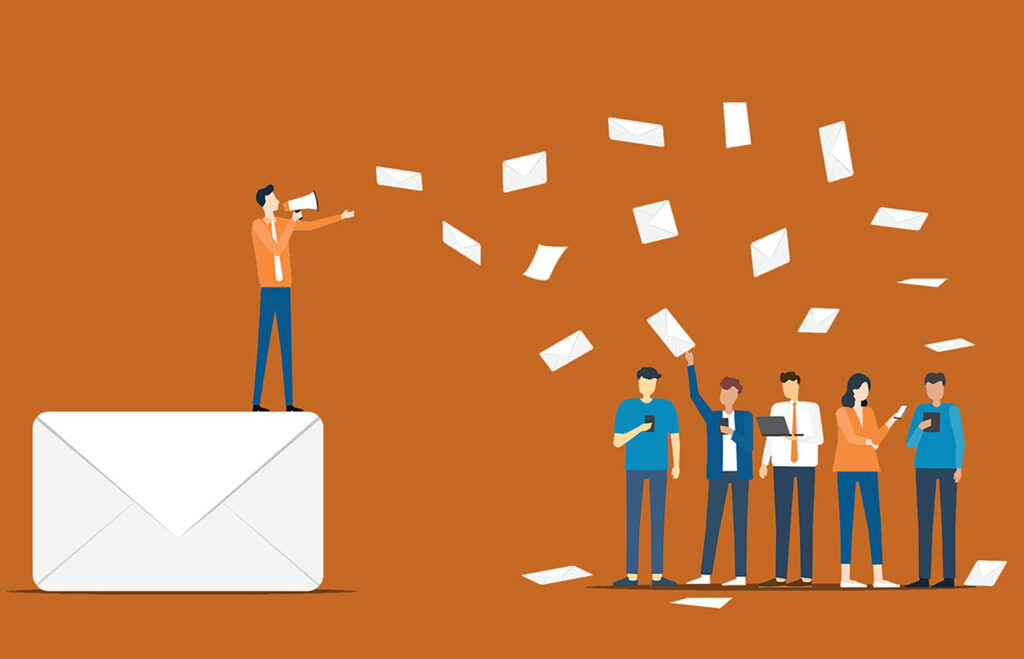The simple and actionable AARRR framework stands for acquisition, activation, retention, referral, and revenue. It’s widely considered to represent the five most important metrics for a scale-up business to focus on, as these metrics effectively measure your company’s growth.
AARRR framework can also be seen as the conversion funnel or customer journey in many SaaS companies. It’s a set of steps a prospective lead goes through, from getting to know the company to becoming a loyal paying client.
The success of the SaaS conversion process highly depends on the written communication with prospects. Regardless of the type of email and the journey stage, the intent for communication is to:
- get delivered
- get to the inbox
- get opened
- get read, and
- get recipients to take action.
Stage-specific rules highly depend on the context. But the main key components are trust, relevancy, and personalization.
Step 1. Acquisition
Before you launch your email campaign, you need to collect an email list of your prospects, i.e., build a subscriber list. The first communications you will send to your leads are acquisition emails. Their purpose is to obtain new customers without prior contact. The basic guidelines are: make sure you leave a good impression.
Onboarding
Onboarding emails are a great way to personalize and inform the customer journey. And with the average open rate of 50%, they are one of the most used acquisition email types.
For example, you can send new subscribers a catchy onboarding email to seize their attention and attract traffic to your website. Check out Lyft’s welcome email that says, “Nice to have you on board.” The photo of two women emphasizes that car sharing is about human communication, and the call to action (CTA) encourages the user to start using the service.
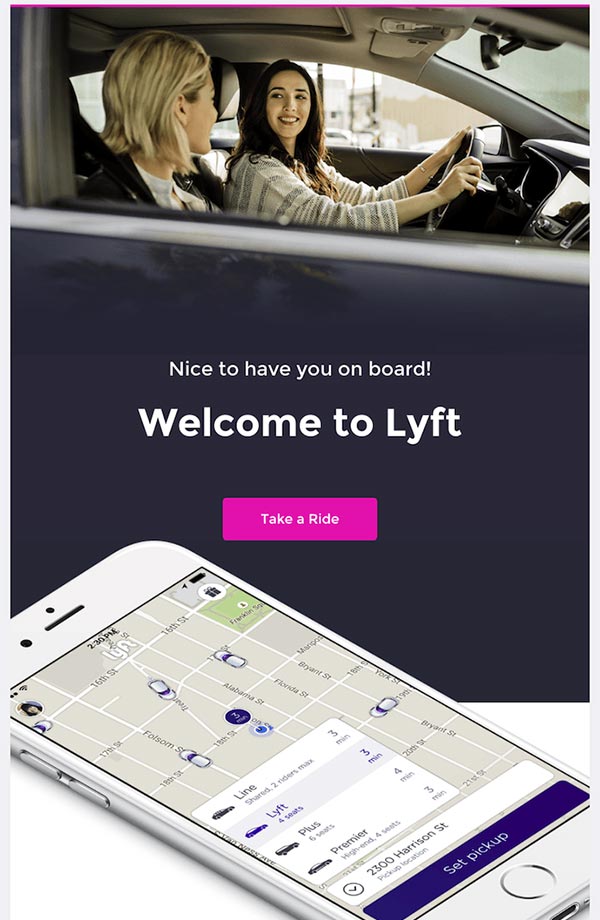
Lead magnets
You can attract SaaS customers with the help of lead magnets or a promise of sharing gated content. As soon as they opt-in, they will receive an email with the promised materials to urge them to start working with your product. Such content can also inspire them to upgrade their plan and get extra features as long as they are still hot leads.
The lead magnet options are countless: content upgrades, lead capture tools, free trials, product demos, expert advice, and much more.
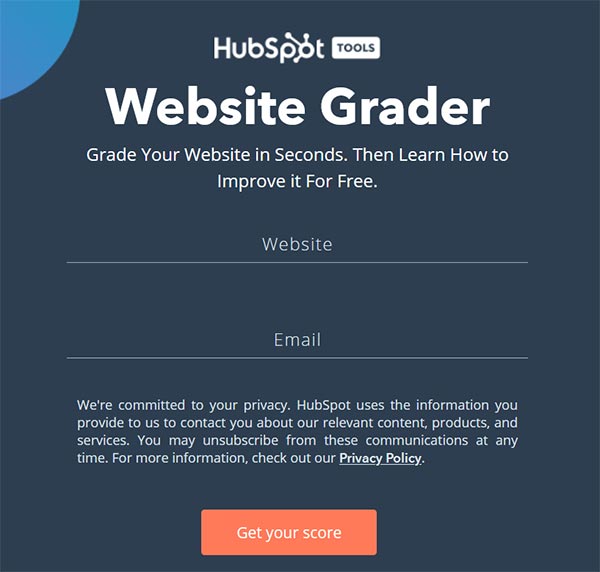
Videos
Inserting a video link is a great way to engage subscribers and boost click-through rates by 65%. Watching a video is easier and faster than reading articles or tutorials. It also gives a feeling of live communication and conveys the emotions you put into your words. Check out the example below.
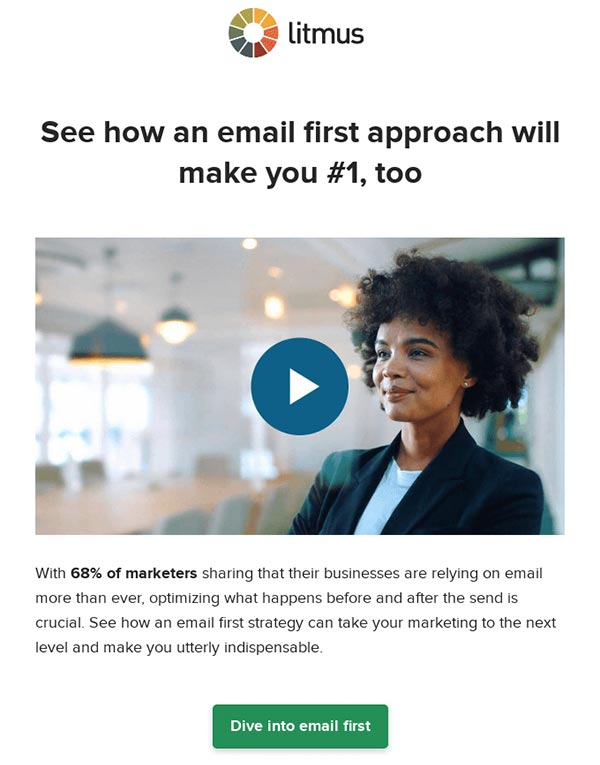
Thank you emails
Saying “thank you” can be a gesture of courtesy. However, it feels nice when someone says thank you, even for such simple things as joining a community of SaaS platform users, subscribing to a newsletter, or registering on a website.
It’s also effective to combine several acquisition strategies in one email. A “welcome” or a “thank you” email works much better when it has a lead magnet that can be a discount, an article, or a downloadable cheat-sheet. This way, while the lead is still hot, you can get an immediate upsell or urge readers to invite their friends to try your service.
Step 2. Activation
Your main goal here is to lead your customers to the moment where they understand that your product or service is excellent and they can’t go on without it. The collected data from your existing users, their challenges, and favorite features can be used in an educational email series that will be truly helpful for your readers.
Statistical insights
A perfect example is Grammarly’s email that includes personalized statistical insights and a smooth logical transition to the CTA:
“Fully protect yourself from writing mistakes by activating all 6 Grammarly features.”
The mentioned personal data is used as a solid argument to pay for the advised features.
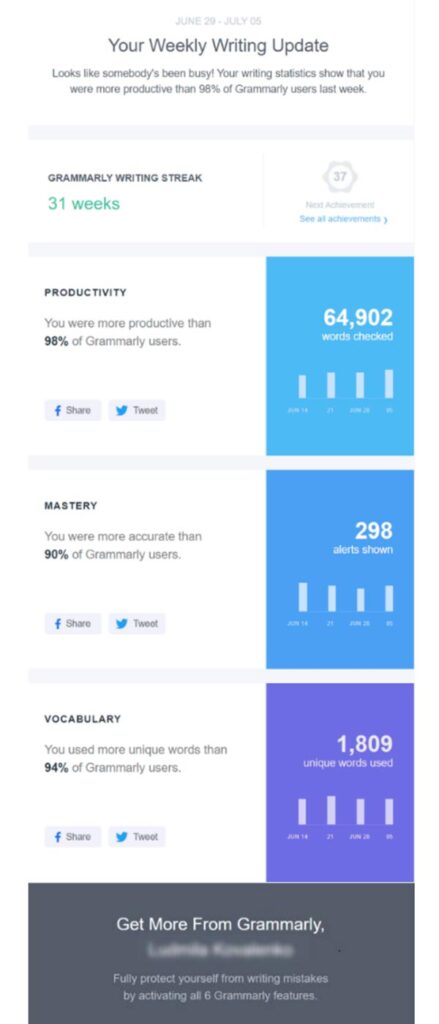
The collected statistics offer individually tailored solutions. It looks as if a personal assistant is showing you how to make the right choices, and the effect of such an approach on conversion can be powerful. Besides, personalized email communication enjoys a median ROI of 122%.
Step-by-step courses
Start instructing your new subscribers on how they can use your solution efficiently. Such a guide can be in the form of a single article or a video to avoid spamming the reader’s inbox. The key is to have all the important information grouped and presented in an easy way.
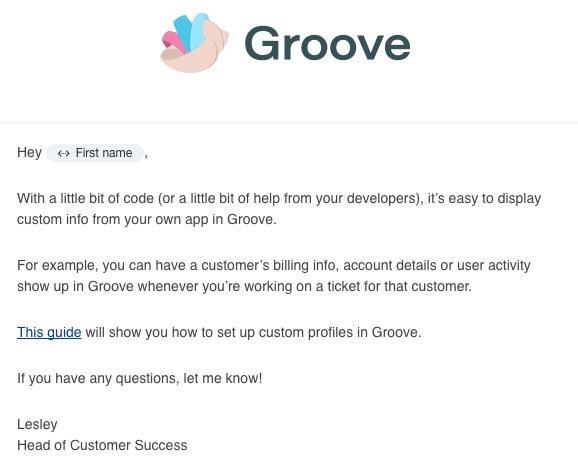
Social proof
Social proof persuades new subscribers that your product is reputable and inspires them to work with it. And since 88% of customers trust user reviews as much as personal recommendations, it’s a great idea to use testimonials or client success stories in email communication. If they are detailed enough, you can lead readers to your website and let them read the whole story of a happy customer experience, like in this Hatchbuck’s example.
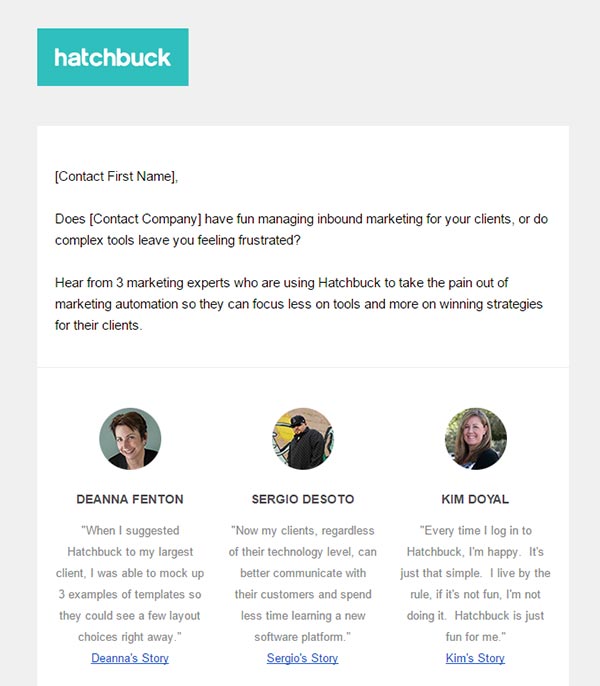
Besides, what’s important about communication at the activation step of the SaaS customer journey is that it can help users find answers and make the customer experience smooth and delightful. Don’t forget to add a link to your support team or knowledge base in your letter.
Step 3. Retention
This phase indicates if your clients are happy with what you provide. If they stay engaged, then you are on the right path. If they leave during the onboarding and activation, try to understand why and make improvements.
During this stage, keep in contact with your clients, re-engage them, and help optimize their experience with your product or service to give more value. Depending on their level of engagement, personalize the type of information you send out, to which client, and at what time. You can use this approach in automated drip marketing campaigns.
Cart abandonment
Cart abandonment is a common case when your lead is about to leave for good, and you have the last chance to make them stay. Businesses can just drop a line or use combined approaches to retain customers and urge them to purchase their solution—CTAs, social proof, or personalized offers based on user behavior.
Expiring offers
An expiring offer is a great stimulus for your subscribers to buy your product with a discount. Your users might even feel inclined to share a hot deal on social media as a valuable piece of content.
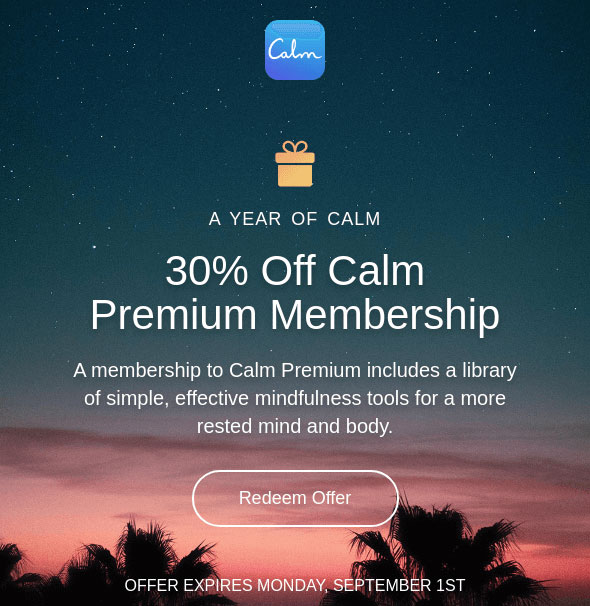
Reactivation
Sometimes you have no other choice but to roll out the big guns and use a combined approach in reactivation emails to those users who have been inactive for a while. For example, you can add personal statistics to make users recollect their successful experience with the service, or include special offers and emotional CTAs.
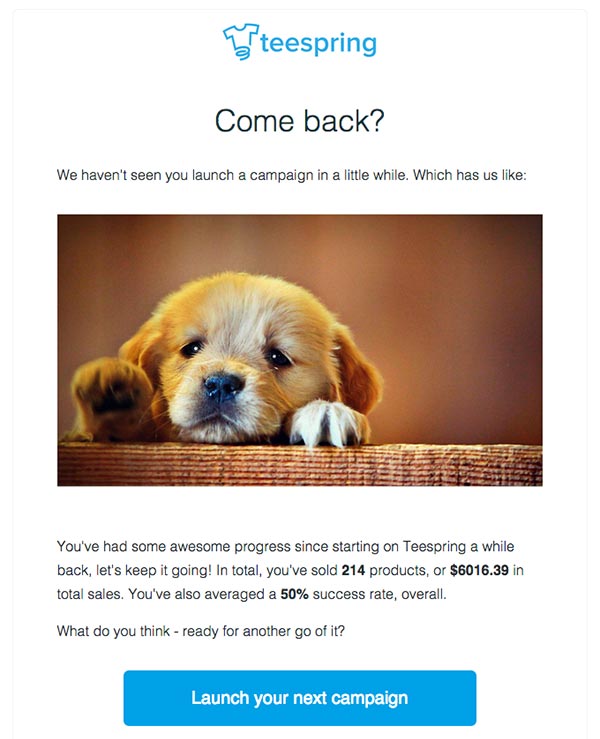
Step 4. Referral
This is the stage that helps you convert your returning customers into your brand advocates. Feedback from a happy client is the best way to spread the word about your SaaS business. Make sure to request your customers to introduce your solution to their friends and colleagues who might also appear among your target audience.
Check out this Setapp referral email. It has a simple, friendly message and a clear CTA that also shows the benefits you will get. The whole letter sounds natural and non-intrusive.
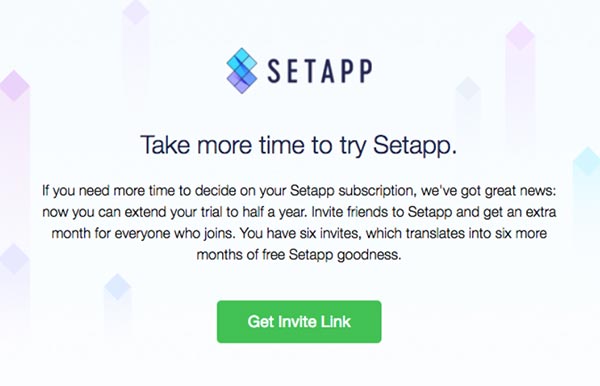
You can also mention a bonus for new referrals. The type and size of reward can range from $1 to infinity, and is only limited by your budget. It can include a combined bonus—a product discount for the referred friend and a gift for your client. Use imagination, research competitors, and offer your target audience the best offer in your niche.
Step 5. Revenue or conversion
This can be marked as the most important step in the SaaS user journey—the step that brings profits. The task here is to increase customer lifetime value, making them buy more or buy more often. There are many types of conversion emails that can help you reach your goals: app improvements, a new feature launch, end of the trial period, change in pricing, etc.
Price change
For example, this email helps Netflix keep its users engaged and aware of the changes in its pricing strategy. At the same time, it urges them to explore the new alluring features with a paid plan.
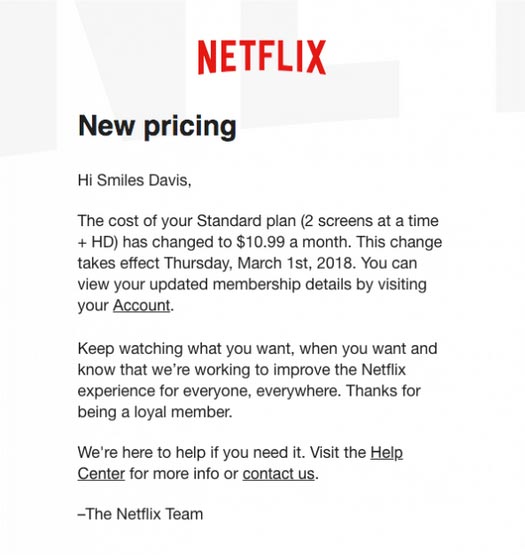
Software improvement
Regular news about software updates is also a way to boost the importance of your product for users, even if you don’t speak about the price. You are working hard on improvements, and you offer better service than competitors. Therefore, it’s natural that it can cost more than rivals’ products, and more than your product used to cost a year ago.
New feature launch
Make sure you describe your new features creatively and engagingly. The email copy must not simply inform subscribers about the updates, but also spark some excitement. Come on, you have been waiting for so long to release these features, and they are impressive!
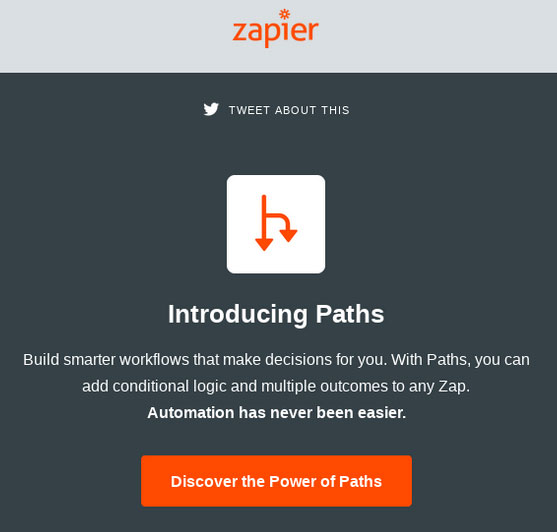
Trial expiration
Why do all good things come to an end? Tell your leads that it depends on them whether their free trial experience will dissolve into memories or turn into fruitful and meaningful cooperation with a range of awesome “pro” features.
Some companies simply include a subscription link, while others prompt to check current offers. A great idea is to be prepared for any sort of user reactions and to suggest several options—restarting a trial, sharing feedback, exporting data, closing the account, or reaching out to support and getting answers to questions that might appear. Even if the user is determined to close the account and delete all their data, you will have some statistics and can apply it while working on future customer experience improvements.
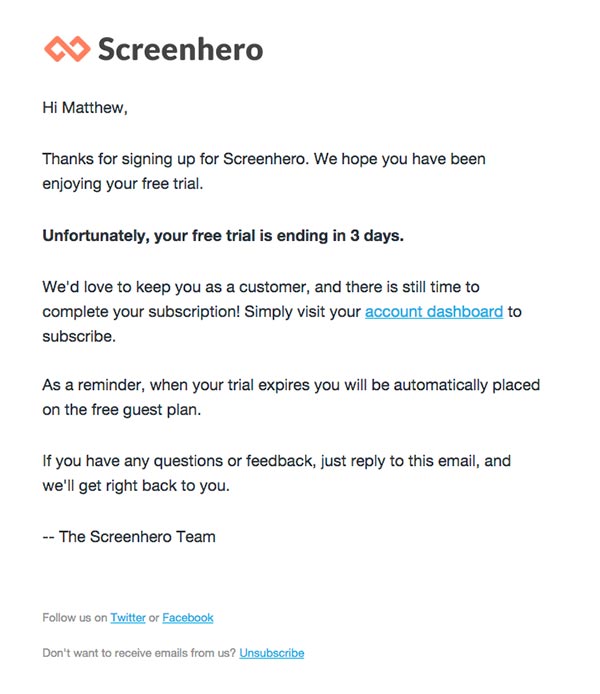
Wrapping it up
As mentioned, the key components of effective email communication with SaaS customers are trust, relevancy, and personalization.
Use collected user data to improve their experience, build trust, and show that you care. Apply several techniques in one letter—for example, social proof, personalized offers, and an emotional CTA—and it will boost your chances to convert your leads.
